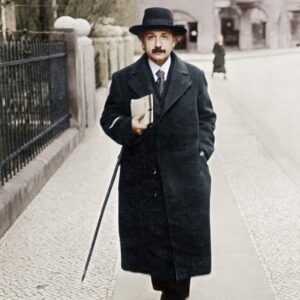
Maastricht University to enter quantum computing collaboration with IBM
Maastricht University will become the first Dutch university to enter the IBM Q Network, a community of Fortune 500 companies, academic institutions, startups and national research labs working with IBM to advance quantum computing. The IBM-UM academic collaboration will focus on addressing the computational needs of the future Einstein Telescope and the LHCb detector at the High-Luminosity Large Hadron Collider at CERN.
The goal of the collaboration is to develop the high-performance computation power required for two next-generation advanced physics detectors: the Einstein Telescope (ET) gravitational wave detector and the upgraded LHCb particle detector at the High-Luminosity Large Hadron Collider (HL-LHC) at CERN.
Next-generation physics detectors require more computational power
Although both detectors are scheduled to be completed in 2035, researchers already foresee that conventional computing methods will fall short of meeting the expected data collection power and data analysis needs. Real-time data collection and processing is likely to become a bottleneck due to the future detectors’ increased sensitivities and superior hardware, which will generate an unprecedented amount of data.
Quantum computing: a new approach to computation
Quantum computing is an entirely different approach to computation. Since quantum computers can potentially outperform conventional computers for certain tasks by many magnitudes, the technology may well be a solution for the ET and HL-LHC’s challenging data processing needs.
Quantum physics observations by Einstein and others have existed for a century. Over the last 50 years, the field has evolved from theory to science to physical devices. Thanks to the efforts of key players including IBM, quantum computers continue to reach higher ‘Quantum Volume’ (a metric indicating the computer’s performance) and the first quantum computers are already beginning to deliver research results and use cases. The timeline for completing the Einstein Telescope and HL-LHC – fifteen years from the start of the IBM-UM collaboration – is expected to provide a suitable timeframe for developing the required quantum computing technology in parallel.
Contribution of Maastricht University and IBM
The research collaboration aims to apply quantum computing technology to meet the data analysis specifications of the ET and HL-LHC. Within this context, research will focus specifically on developing dedicated algorithms.
Two departments of Maastricht University (UM)’s Faculty of Science and Engineering will join forces with IBM Research Europe: the Department of Data Science and Knowledge Engineering (DKE) and the Department of Gravitational Waves & Fundamental Physics (GWFP), the latter as a member of the national Nikhef collaboration. The UM departments will bring their expertise in gravitational wave physics, elementary particle physics, signal analysis and artificial intelligence.
In the first step of this collaboration, IBM Research will sponsor two postdocs with a dual appointment at IBM Research’s lab in Zurich, Switzerland and at Maastricht University’s Faculty of Science and Engineering. IBM will support the projects with access to its quantum computing expertise and resources.
Source: Maastricht University. Maastricht University, Maastricht University with IBM in quantum computing…
Content may have been edited for style and clarity.

